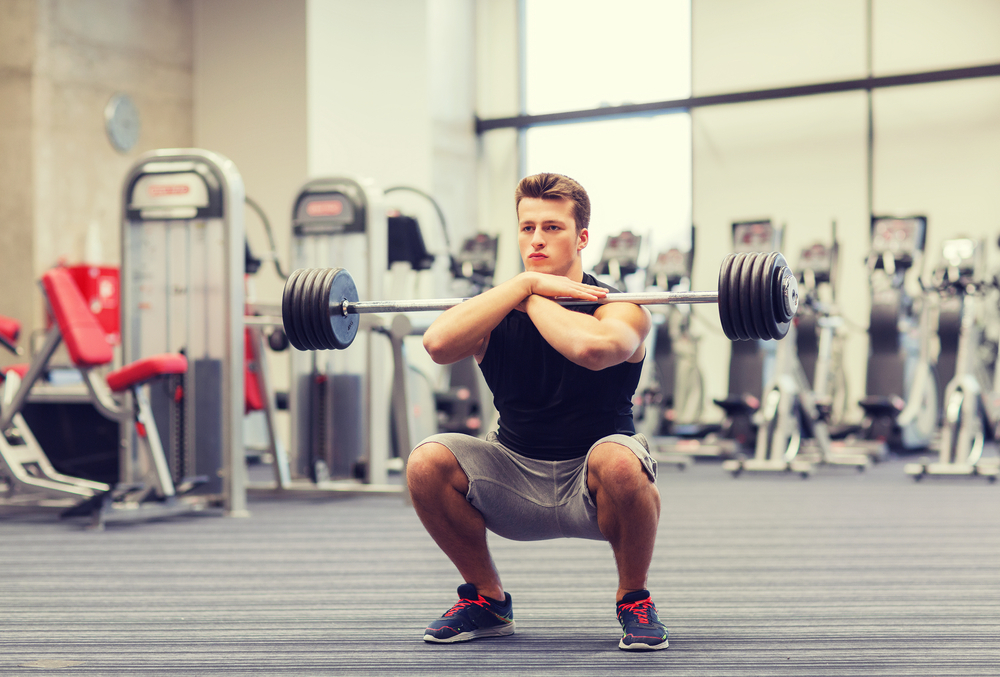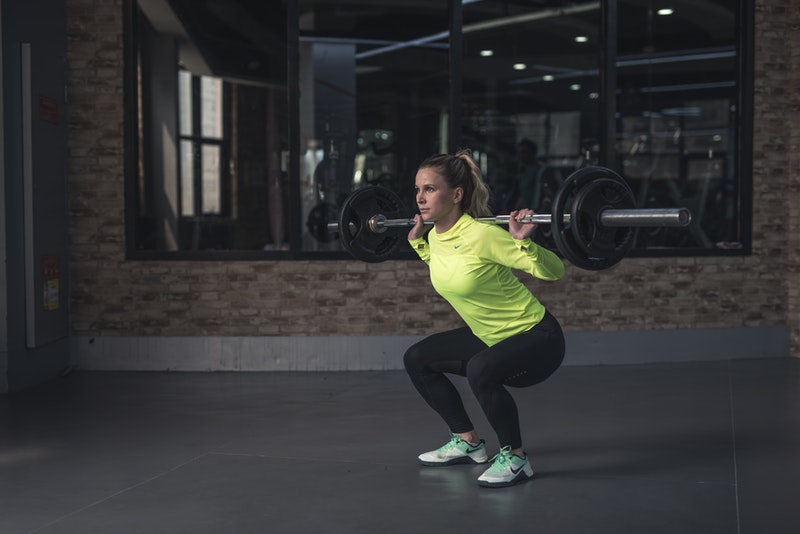As a former weightlifter, I am always amused at how powerlifters (and almost everyone else) shy away from front squats. Yes, they are hard, but they come with numerous benefits.
Whether front squats will help improve your back squat or not depends on the problem you’re having with your back squat in the first place.
Do Front Squats Improve Back Squats?
Front squats have the potential to help improve back squats. But before you add front squats to your program, you need to understand:
- What is holding your back squat back in the first place; and
- Whether the front squat cost/benefit ratio is worth it for you.

Use this guide to troubleshoot common squat problems, and whether the front squat is a good option.
When Front squats can help improve back squats
Your quads need work
Most people these days squat raw or with wraps, which typically means a narrow (roughly shoulder width apart) stance.
This narrower stance places a high demand on the knees, ankles, glutes and quads.
To stand up out of the hole, there’s a large contribution from the quads – the large muscles on the front of your thighs.
When the quads aren’t doing their fair share, you might notice a “shunting” into the heels as you change direction and begin to stand back up.
This squat looks normal on the way down, and then suddenly the shins become vertical as you change direction and begin to stand.
The buttocks shoot backwards, and your back takes a beating.
This issue will usually only present itself over a certain percentage of weight.
You might demonstrate perfect technique at anything under 75%, for instance, but anything over that goes straight to hell and never seems to improve.
If this is the case, you may need to program in some direct quad work. And front squats are great for quads. In order to execute a front squat, you are forced to stay upright with your hips under the bar.
You aren’t balancing correctly in the squat
To squat well, you need to balance the bar over your midfoot throughout. The most common errors here are:
1. Teetering on to the toes, which can send the bar forward of your centre of balance and lift the heels.
2. Keeping the weight in the heels throughout (commonly taught in CrossFit but sadly it’s just wrong, wrong, wrong).
If you try to do either of these things in the front squat, you’ll get wrecked.
The bar will pitch forward and dump onto the floor. Once the weight gets to a certain point, your margin for error becomes millimetres.
The good thing about this is the front squat teaches you to come out of the hole the same way you went in.
In order to carry this skill over, you’re still going to need to mindfully practice this pattern once the bar is on your back again.
Your midsection is weak
Does it look like your back is involuntarily unlocking, part way through the squat?
If so, you may have a problem with keeping stiffness in your midsection, or parts of your back musculature.
Fortunately, all of these things are addressed by front squats. You need to be stiff as a board to front squat heavy weights.
Once again, this bracing is a skill that needs to be brought over consciously to the back squat.
You have to tighten up like your life depends on it.
When Front Squats Don’t Improve Back Squats
Your technique sucks
If you’re doing something drastically wrong in the back squat every single time, there’s no other movement that’s going to help you.
Wide equipped squats
Because the positions and joint angles are so different here, the front squat is much less mechanically similar. You’re unlikely to see as much carry over.
(This is assuming you aren’t currently missing your wide squats because your quads are weak. This is unlikely, but can happen.)
When you’re just one of those people it doesn’t carry over for
Everyone is different. Some assistance movements build your main movements better than others.
If you cycle front squats into your training for a long period of time (I feel 6 months is a good evaluation period) and you see no improvement, it might not be what you need at this time.
Use what works, discard what doesn’t.

Do Front Squats Help Other Types Of Squats?
Possibly.
Which type of squat are you trying to improve?
Why are you squatting in the first place?
It helps to revisit these principles.
If you’re squatting to get stronger, then you’ll need to use the squats that allow you to use the most weight through a long range of motion.
That’ll be a barbell on the front or back.
For anything submaximal, raising your absolute strength using front squats will very likely help.
If you’re looking to improve the overhead squat, getting stronger through the legs and mid back is going to help.
The front squat does a great job of this with loads you can’t train using the overhead squat alone.
If you’re looking to improve single leg squatting, such as the pistol, you’re always going to benefit from specific practice in conjunction with a large strength reserve.
Front squats are good for the strength reserve.
Front squat three plates or more and you’re not going to be troubled by any kettlebell when it comes to goblet squats.
Who should not be front squatting?
People with AC joint issues
Not everyone benefits from front squatting. If your AC (acromioclavicular) joints are separated, front squatting can be a bad idea.
Let pain be your guide, and check with a medical practitioner if concerned.
Busy people?
I’m going to end on a controversial note here.
As a gym owner, I run a powerlifting-based general strength program.
It’s targeted at the general population – the kind of people with full-time jobs and busy schedules.
Most of these members are desk bound, and will suffer from poor posture, stiff necks and shoulders.
This feeds down into the wrists and forearms.
What’s the number one complaint we hear when someone is learning how to front squat? Wrist pain.
These people typically only dedicate around 3 hours per week to their lifting.
They can still get brutally strong with a bar on their back and a bar for squatting and a bar on in their hands for benching and deadlifting.
Try to add in the front squat and most of these people are either not going to be able to get into the rack position, or they will feel extreme discomfort doing so.
Assuming the time limitation, how many months will it take for these people to front squat with enough weight to see any stimulus?
The juice may not be worth the squeeze.
That training time could be spent using other squat variations to greater effect.
You can get around the limitations with specialty tools, like a safety squat bar or front squat harness.
You would have to be pretty certain of the carryover before investing in these tools.
Sources
I’ve been in the fitness and strength training industry for nearly a decade. In that time, I’ve gained 30 pounds of muscle, written hundreds of articles, and reviewed dozens of fitness supplements. As for my educational background, I’m a currently studying for my Active IQ Level 3 Diploma in Personal Training.

